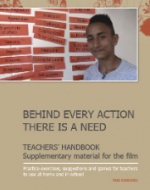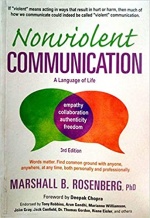Loving Communication
November 22, 2020
Quote of the Week
"Do not let the behavior of others destroy your inner peace." - Dalai Lama
A Culture Of Peace In Schools
 Conflicts are a part of life. One may argue that conflicts are gifts that give us opportunities to grow and deepen relationships. In a school environment, how can we resolve conflicts in a way that keeps the atmosphere peaceful and harmonious?
Conflicts are a part of life. One may argue that conflicts are gifts that give us opportunities to grow and deepen relationships. In a school environment, how can we resolve conflicts in a way that keeps the atmosphere peaceful and harmonious?
Take a look at this series of short videos in which teachers and children are experimenting with the principles of nonviolent communication for a culture of peace in schools.
P.S. If the word 'nonviolence' puzzles you, it is a translation of a Sanskrit word अहिंसा (Ahimsa) which in its deeper sense means unconditional love for all beings in the universe.
Reading Corner
 Title: Nonviolent Communication - A Language of Life
Title: Nonviolent Communication - A Language of Life
By: Marshall B. Rosenberg
For: Adults (With resources to connect with children)
Why: Through stories, examples and role-plays, this book provides a deep understanding of the core components of the Nonviolent Communication (NVC) process and consciousness.
If “violent” means acting in ways that result in hurt or harm, then much of how we communicate—judging others, bullying, having racial bias, blaming, finger pointing, discriminating, speaking without listening, criticizing others or ourselves, name-calling, reacting when angry, using political rhetoric, being defensive or judging who’s “good/bad” or what’s “right/wrong” with people—could indeed be called “violent communication.”
Nonviolent Communication is the integration of four things:
• Consciousness: a set of principles that support living a life of compassion, collaboration, courage, and authenticity
• Language: understanding how words contribute to connection or distance
• Communication: knowing how to ask for what we want, how to hear others even in disagreement, and how to move toward solutions that work for all
• Means of influence: sharing “power with others” rather than using “power over others”
Nonviolent Communication and this book serves our desire to do three things:
• Increase our ability to live with choice, meaning, and connection
• Connect empathically with self and others to have more satisfying relationships
• Sharing of resources so everyone is able to benefit
Be the Change
Think of a person with whom you may have had a conflict or a difference of opinion. Listen to this song See Me Beautiful. Now "see" this person with a fresh perspective.





